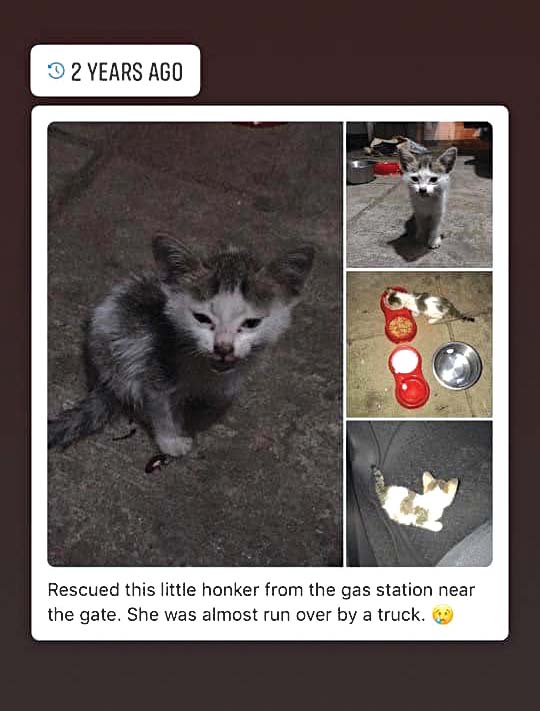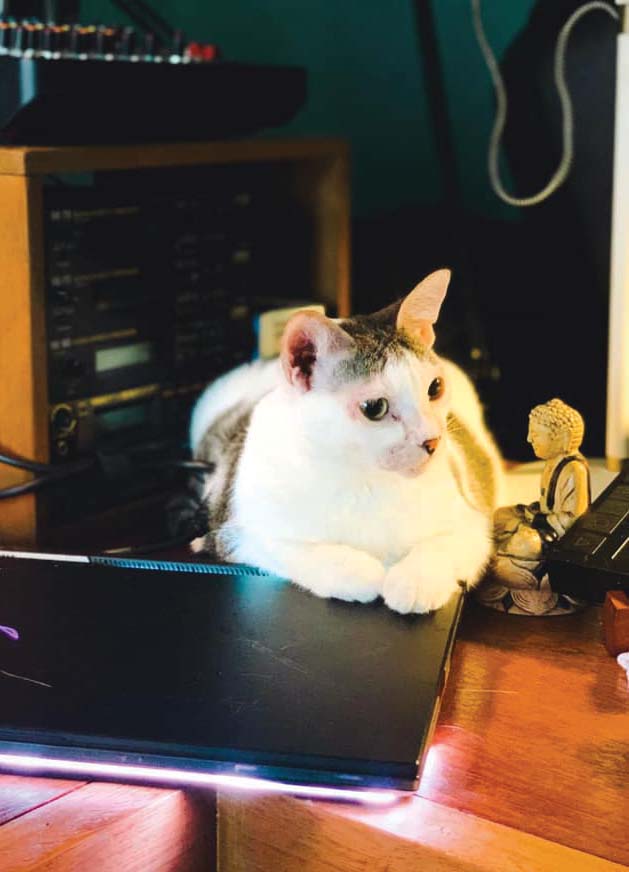I live with 27 Cats, all of whom were once strays, and I’ve taken care of a lot more. The first Cat I rescued was my daughter Mighty — I saw her while driving home one late night, all grimy and skinny, probably no more than a month old, slowly crossing the road towards a gas station close to our village. I slowed down, deciding pretty much right away that I would take her, and saw that a large cement mixer had turned onto the gas station as well – and it was headed straight for Mighty.
Thankfully, a quick-to-react gas attendant ran towards Mighty, waving his arms wildly at the truck. He picked her up, I offered to give her a home — and in the five years that we’ve lived together, I’ve often said that it feels like Mighty rescued me herself.
I also play a ton of video games, and when you’ve been a gamer for any good amount of time, you’re bound to be familiar with the handful of well-worn narrative and gameplay tropes that make up so many of today’s popular titles: a lot of guns and swords, forsaken tarnished antiheroes or warriors of light, gritty sci-fi or colorful high fantasy worlds… all the usual, admittedly fun, stuff.
Stray’s central premise is very different: the hero you play throughout the entire game is a very, very well-recreated digital feline. When the game was announced in June 2020, I knew right away that I had to play it. And last July 19, we finally got it.
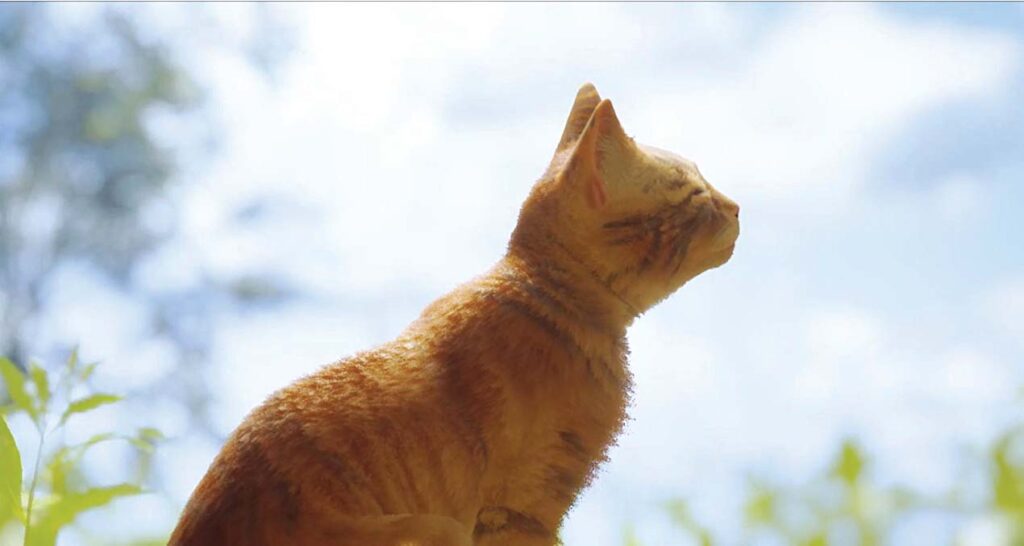
WALKING SIMULATOR
What kind of game is Stray? I would describe Stray as being close to what are called “walking simulators” — games that offer little by way of intense gameplay, instead focusing on exploration, discovery, and narrative. Stray definitely fits this mold, with its story-first design, but with mild, beginner-friendly platforming, stealth, and action elements, and a meowing protagonist who is 11/10 on the cuteness scale.
Stray tells the story of a playful orange Tabby who at the start of the game falls down a deep hole into a long lost city inhabited by sentient robots. Once there, you meet a wonderful cast of supporting characters, including the flying drone B-12, who quickly becomes a loyal companion, guide, and assistant throughout the adventure. B-12 plays a key gameplay role as well, serving as a translator, scanner, inventory, and source of hints if ever you find yourself lost.
Other characters are mainly humanoid robots who have built their own culture within the confines of the long-forgotten city. There are robots who are musicians, robots who play board games, and robots who each have individual histories and desires. Stray’s is a wonderfully well-inhabited world.
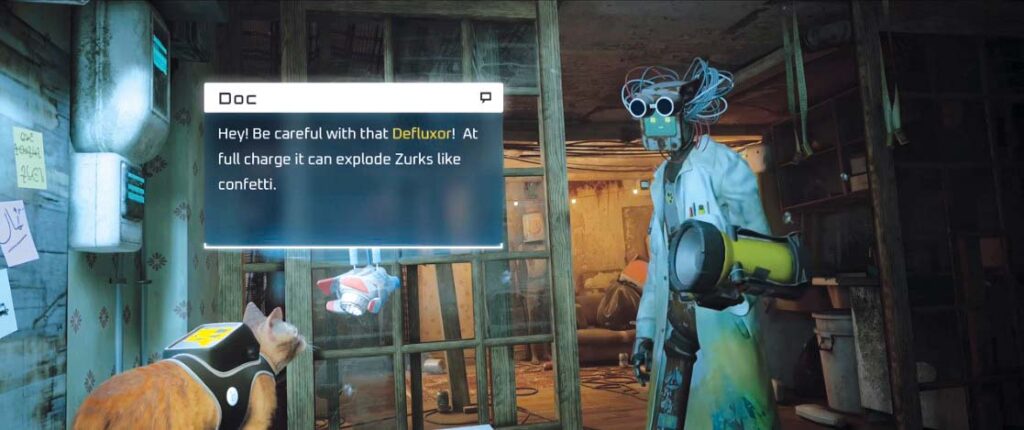
AAA POLISH IN AN INDIE PACKAGE
Graphics and sound are as good as any indie 3D game of the past few years, and they come together very well to depict a place that, despite being called the “Dead City,” is home to a bunch of interesting, colorful residents living amongst ruins that are simultaneously full of death and full of life. Everything is all constructed with great attention to detail, so no complaints there.
The game does struggle in a few areas: Movement sometimes feels slow rather than lithe and slinky, and the Cat’s short stature makes for sometimes awkward camera controls. Some players are sure to complain about the game lasting only five to seven hours. But none of these derail what is on the whole a very rewarding experience, especially when you consider the uniqueness of the game’s core elements.
This is what the game does very well: the graphics, emergent narrative, the details of each minor character — basically what you would call world-building — are topnotch, despite the short about six hours of playtime on offer. But the biggest draw here will always be turning the player into a Cat. Who wouldn’t want to look at a brand new world through the eyes of a little Tabby?
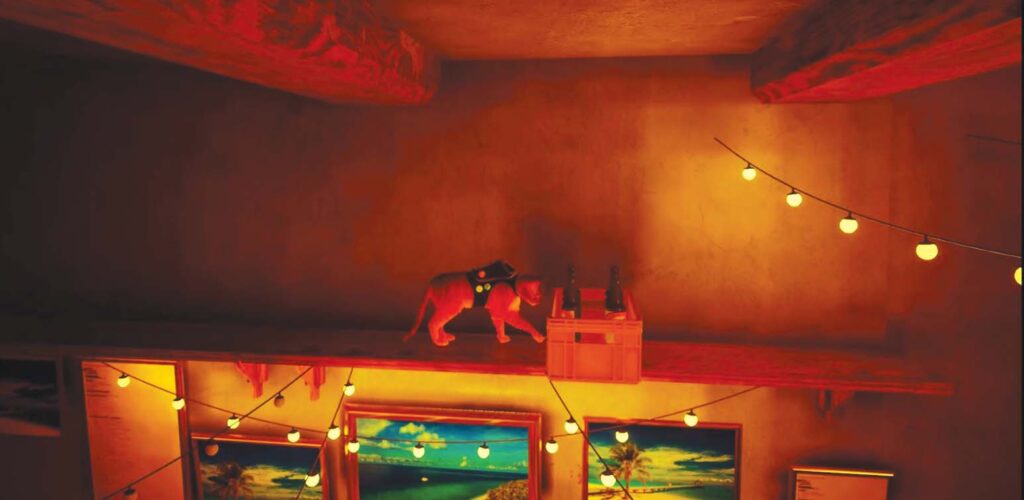
Stray wants you to act like a cat in the game — you can meow, roll around, and of course, push stuff off shelves.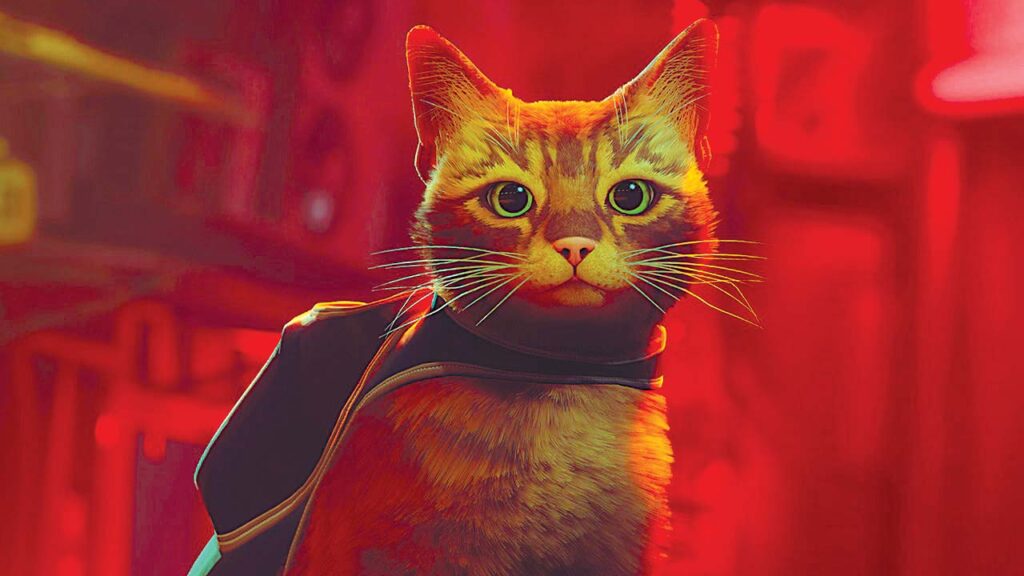
CREATED FOR AND BY CAT LOVERS
Stray’s narrative is great — short, sweet, moving, relentlessly hopeful amid the darkness — but ultimately secondary to the experience of taking on the game’s quirky cyberpunk world from the POV of a Cat — always close to the ground, endlessly curious, getting distracted by things to scratch and push off ledges, loafing, kneading, nuzzling, sliding, rubbing, meowing (yes, there is a dedicated meow button) — all lovingly recreated by developers who I am absolutely certain are themselves Cat lovers.
As such, the game becomes a vehicle for empathy across species, a quality that the world is sorely lacking. The world the game presents is fiction, yes — but the concerns raised are all too real: environmental destruction; our often violent relationship with the natural world, other humans, and other earthling species; the plight of unhomed animals in cities; the idea that sentience, whether in Cats or in robots, is morally important.
As a vegan who also cares deeply about the environment and social justice issues, these are concerns that resonate deeply with me. And to be able to investigate these themes and give them the weight they deserve through a story starring you as a lovable little Cat is fantastic.
I can recommend Stray without hesitation to gamers of all stripes, and with its simple controls, captivating world, and absolutely adorable hero, even to those who have not picked up a game controller in a long time.




